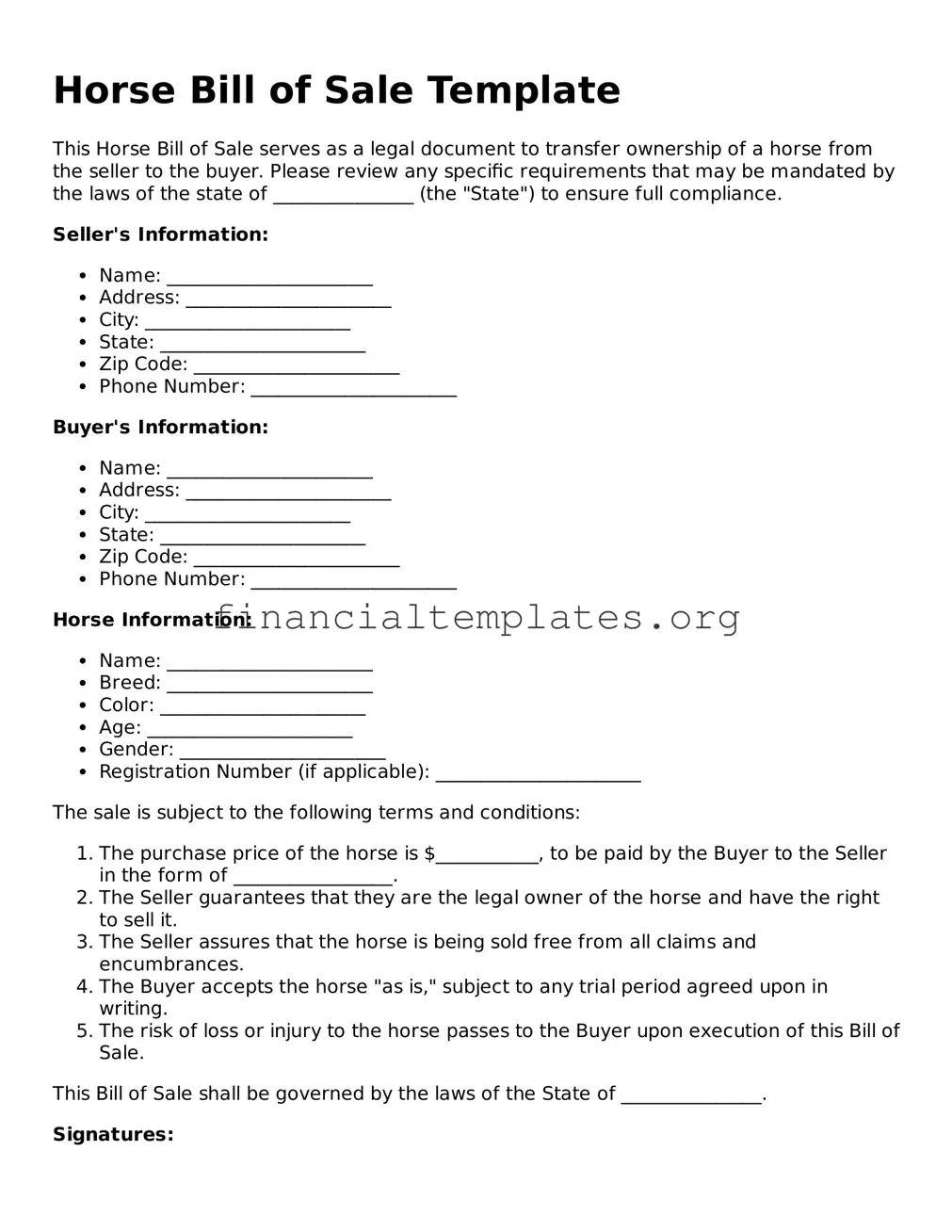A Vehicle Bill of Sale is similar to a Horse Bill of Sale as both serve as legal documents that formalize the sale and transfer of ownership. They detail the transaction between buyer and seller, describing the item being sold (a horse or a vehicle), the sale price, and both parties’ information. These documents act as proof of transfer and can be crucial for registration and tax purposes.
Like the Horse Bill of Sale, a Boat Bill of Sale is used when selling or buying a boat. It records the transaction, providing a written agreement that includes specifics about the boat, such as its make, model, year, and hull identification number (HIN), in addition to the sale price and parties' details. This document is often required for the registration of the boat under the new ownership.
The General Bill of Sale is another document similar to a Horse Bill of Sale, but it is more flexible, covering a wide range of personal property transactions beyond horses, such as furniture, electronics, and more. This document also outlines the transaction details, including a description of the items sold, the sale price, and identification of the buyer and seller. It is a versatile form used for various personal property sales.
A Firearm Bill of Sale closely resembles the Horse Bill of Sale in its function to legally document the transfer of ownership from a seller to a buyer. This document specifically details the transaction of a firearm, including the make, model, serial number, and caliber of the gun, alongside the usual transaction details. It ensures that the sale complies with state and federal regulations.
The Pet Bill of Sale shares similarities with the Horse Bill of Sale as it is designed for transactions involving animals, though it's more broadly applicable to pets like dogs, cats, and exotic animals. This document includes details about the pet, such as breed, age, and health information, alongside the transaction's specifics. It serves to legally transfer ownership and outline the responsibilities of the new owner.
An Equipment Bill of Sale is akin to a Horse Bill of Sale in its role of documenting the sale of specific items, in this case, machinery or equipment. It details the equipment being sold, including make, model, and serial number, the sale price, and the parties involved. This type of bill is vital for the buyer in claiming ownership and for both parties as a record of the transaction.
A Real Estate Bill of Sale, while focusing on property rather than movable goods or animals, shares the core purpose of legalizing the transfer of ownership from one party to another. It outlines the property details, the agreed price, and both parties' identities. This document, crucial in real estate transactions, ensures a smooth transfer and serves as proof of sale.
Lastly, an Artwork Bill of Sale parallels the Horse Bill of Sale by documenting the transaction of a valuable item, in this case, art. It provides a detailed description of the artwork, including the artist’s name, the piece's title, medium, dimensions, and provenance, alongside the sale price and parties' details. This ensures the artwork’s authenticity and provenance, protecting both the buyer and the seller.
